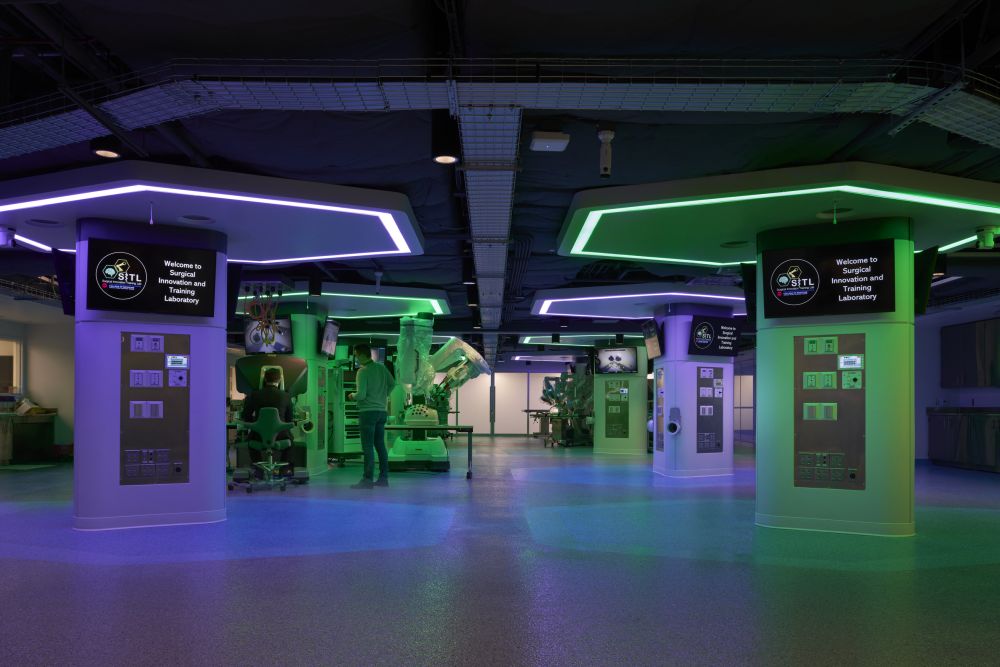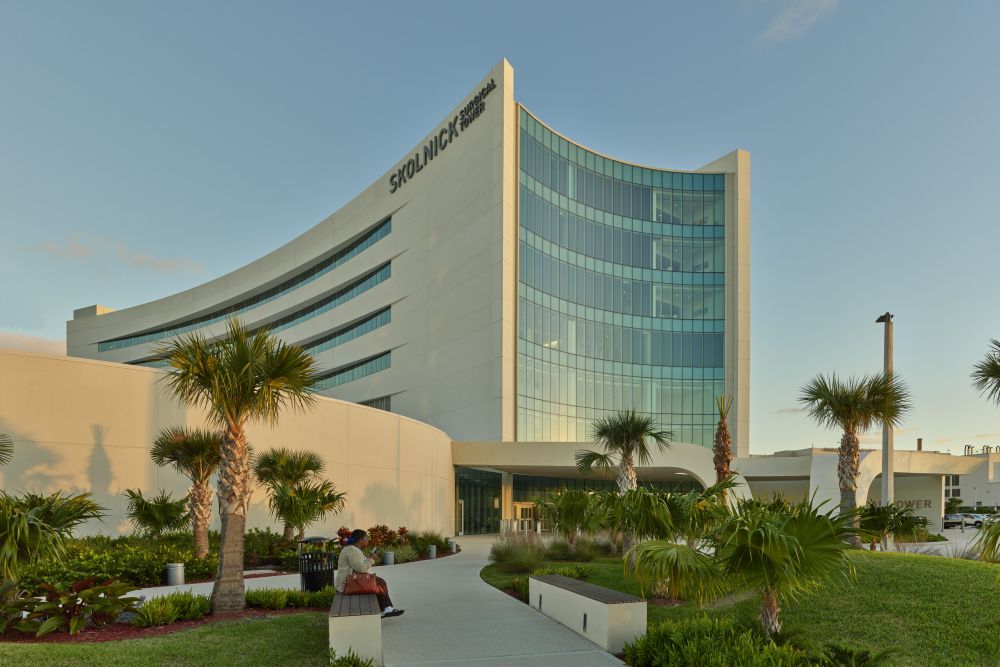Radical flexibility: Designing surgical simulation spaces for a future unknown
We can’t predict the future of healthcare simulation, but we can plan for it.
While the concept of simulation has been a part of healthcare training for more than a century, recent decades have delivered an explosion of advancements: 3D-printed artificial models, virtual and augmented anatomy and artificial intelligence, to name just a few. We’ve seen technology transform simulated healthcare training, and we expect new discoveries to continually change the ways we prepare integrated care delivery teams to provide the most effective, equitable care.
But how do we design surgical simulation spaces that are never obsolete in a time when healthcare is evolving far too rapidly for us to predict?
One idea — possibly counterintuitive coming from architects — is that empty space with plenty of nearby storage is the best space for simulation. An open, flexible room with robust infrastructure that supports hands-on learning and regularly fluctuating equipment can support known and potentially unknown simulation scenarios. For example, perimeter walls and a ceiling that can be easily modified or re-configured will allow the space to meet today’s needs and be adaptively reimagined in the future.
Medical simulation spaces that are highly adaptable and designed to accommodate a wide range of clinical scenarios will remain relevant for decades to come.
We implemented this framework in the simulation space we designed for OR 360° at Cedars-Sinai Medical Center. It features a highly flexible layout and can be effortlessly reconfigured to support various needs. The same space can simulate extreme scenarios from an operating room in a hospital, to a battlefield in the middle of a desert, to a patient bedroom. The space features flexible, movable partitions and a ceiling system designed for easy attachment of equipment like lights, monitors, booms, and robots to ceiling tracks. This setup enables components to be swiftly and effortlessly moved in and out as needed.
University of Illinois Chicago’s Surgical and Innovation Training Lab (SITL) was designed with a similar strategy. It provides a space that not only replicates how surgery is done today but also enables surgical simulation in untested environments — an operating room (OR) in the space station, a modular OR on a Mars colony and beyond.
The centerpiece of the SITL is the Innovation Lab, which connects a traditional surgical space and an experimentation research garage. Inspired by theater design, spaces allow for extreme adaptability and flexibility — equipment can move on and off stage to create different modes of use. Like in theater, and along the perimeter, storage and maker spaces house equipment that can be easily moved onstage and offstage, increasing its current utilization and future potential.
Testimonials
Successfully executing this approach starts with understanding how simulation spaces have developed in the past and then partnering with intuitions to develop consensus on the broader vision. We have proof that these adaptive and highly versatile environments can emulate various scenarios and offer a multifaceted platform for education, practice and research.
The strength of this innovation lies in its ability to create an immersive, controlled and replicable setting for the complex array of today’s procedures, but also provide space to explore and shape future models of care. We may not be able to predict the future of simulation, but we can certainly plan for it.










